EWIHER Top 500 Arts, Science & Commerce Colleges Rankings 2025-26
In the Part II edition of EWIHER 2025-26 we present league tables rating and ranking India’s 500 most respected Arts, Science and Commerce colleges carefully categorised into private and government autonomous and non-autonomous institutions – Dilip Thakore & Summiya Yasmeen
Contemporary India’s high graduate unemployability data — an estimated 45.19 percent graduates of the country’s 47,000 colleges are unemployable — indicates that academic standards in India’s higher education institutions (HEIs) — especially undergrad arts, science and commerce colleges — are alarming.
According to the India Skill Report (ISR) 2025 published by Wheebox ETS, a Gurugram-based talent acquisition, retention, and upskilling company which administers its Global Employment Test to a sample 6.5 lakh final year college students and graduates, only 54.81 percent of graduates in India are globally employable. This is reported as an improvement over 51.25 percent last year and 33 percent a decade ago. While ISR places a positive spin on its latest report, it also translates as 45 percent of college graduates and postgrads being substandard and unemployable by global standards
This depressing report is supported by Mercer/Mettl, a New York-based firm with several offices in India that bills itself as the “world’s fastest, largest online assessment and certification company” with 6,000 corporate clients in 80 countries. Mercer/Mettl reports that only 46 percent of college graduates have “sufficient learning agility” and 50 percent the necessary soft skills for global employment. Therefore, choosing the ‘right’ — most academically and aptitudinally suitable — undergrad college is a matter of critical importance for higher secondary school-leavers.
Therefore since 2013, your editors have been publishing the EducationWorld India Higher Education Rankings to identify 500 best undergrad Arts, Science and Commerce (ASC) colleges countrywide; 200 private engineering colleges from a total 3,600 and 100 private B-schools out of a total of 3,900. Although media publications and several government agencies notably NAAC (National Assessment and Accreditation Council), a subsidiary of the University Grants Commission (UGC), awards its A-E star ratings to colleges and universities that opt for assessment, NAAC doesn’t — and never did — inspire much confidence. Even though it was established in 1994, thus far only 9,062 colleges and universities have volunteered for NAAC accreditation.
Hardly surprising. First colleges/universities that apply for accreditation are obliged to pay a fee of Rs.25,000 to NAAC, and also bear the travel and other expenses of task forces of academics constituted by NAAC to inspect applicant HEIs. And it’s an open secret that NAAC inspection teams demand lavish hospitality and often cash envelopes to provide favourable reports. In early February this year, the Central Bureau of Investigation (CBI) arrested three office-bearers of the Guntur-based Koneru Lakshmaiah Education Foundation (KLEF) together with seven members of a NAAC task force for conspiracy to provide KLEF University, Guntur a favourable assessment report. On April 9, Dr. Anil Sahasrabudhe, chairman of NAAC, announced that following this contretemps, the Bangalore-based NAAC has weeded out 20 percent of its approved academic assessors on the recommendation of a ten-member Special Committee.
The other official HEIs rankings initiative is the Union education ministry’s NIRF (National Institutional Ranking Framework) introduced in 2015. Although it is often cited by some HEIs as proof of university excellence, ab initio NIRF has drawn criticism for arbitrary and patently incredible rankings.
For instance, last month in the commentary of the EducationWorld India Higher Education Rankings (EWIHER) 2025-26 Part I edition which ranked the private sector Birla Institute of Technology and Science (BITS), Pilani (estb.1964) India’s #1 private engineering and technology university for the fourth year consecutively, your editors highlighted the #20 rank awarded to BITS-Pilani among engineering colleges and #19 among universities in NIRF 2024. We wrote: “The low rank awarded to BITS-Pilani in NIRF rankings has been repeatedly criticised by your editors (NB. Neither BITS-Pilani nor the Birla Group advertise in EW) as indicative of flawed NIRF methodology based on institutional self-assessment. On March 27, in response to a PIL (public interest litigation) writ, the Madurai Bench of the Madras high court issued a stay order on the ministry from publishing NIRF 2025. The PIL alleged “data manipulation and lack of transparency in the NIRF ranking process”.”
Moreover, excellent HEIs which routinely rank high in the annual EWIHER — O.P. Jindal Global and Ashoka universities, Dhirubhai Ambani Institute of Information & Communication Technology, Gandhinagar — don’t participate in the annual NIRF, indicating fear of bias in favour of government-promoted HEIs.
Several media publications including India Today also publish annual college and university rankings. But these are essentially politics-oriented publications lacking the specialist education knowledge and focus of EducationWorld. Therefore, it is submitted that the annual EWIHER with its careful categorisation of HEIs — to eliminate apples with oranges type comparisons — is the most reliable guide for school-leavers seeking admission into India’s Top 500 ASC colleges.
Against this backdrop, we present the Part-II edition of EWIHER 2025-26 in which we rate and rank India’s most respected 500 Arts, Science, Commerce (ASC), 200 Private Engineering institutions and 100 Private B-schools. For reasons of accuracy, we have carefully categorised ASC colleges into Private and Government autonomous and non-autonomous institutions.
This categorization is important because in general, parents/students prefer ASC colleges with academic and administrative autonomy, less tethered to the apron strings of large parent universities which often affiliate 500-700 colleges. Autonomous colleges empowered to design their own syllabuses and curriculums tend to offer higher quality education than non-autonomous ASC colleges that offer standardised affiliating university designed syllabuses. It’s noteworthy that autonomous colleges are conferred this status after careful evaluation by the apex-level University Grants Commission. As such, they are generally regarded a cut above non-autonomous colleges.

Mishra: easy access & response
However within India’s needlessly complex education system, the best colleges are not necessarily autonomous. For instance St. Stephen’s College, Delhi, routinely ranked the country’s #1 non-autonomous ASC college — for mysterious reasons and despite pleading for autonomous status for several years — has not been awarded autonomy. Therefore, school-leavers seeking admission into best undergrad colleges should tread carefully.
Another distinguishing feature of the annual EWIHER is that for engineering colleges, we restrict our league table to the Top 200 private institutions. The rationale for excluding government engineering colleges is that all league tables are dominated by the country’s 23 IITs (Indian Institutes of Technology) and 31 NITs (National Institutes of Technology). Admittedly, these pampered, heavily subsidised Central government engineering colleges provide good quality engineering and technology education. But because they are heavily subsidised, they are the first preference of school-leavers and tediously dominate all league tables. This consideration apart, although a record 1.2 million school-leavers write the IIT-JEE (joint entrance examination), the annual intake of these 23 institutes is a mere 10,000. And NITs 7,750.
In the circumstances with a minuscule number of the 1.2 million school-leavers who write the gruelling annual IIT-JEE admitted into these excellent engineering institutes, your editors resolved to exclude them — and all government engineering colleges — to highlight the next best option: the country’s Top 200 private engineering institutions.
To compile EWIHER 2025-26, we again commissioned the Bangalore-based AZ Research Partners Pvt. Ltd, whose clientele includes blue-chip companies such as Tata Hitachi, IndusInd Bank, Mars Chocolates, WPP Group, Pearson Group and significantly, Ashoka, Mahindra and BML Munjal universities.
“For this survey, we constituted a sample base of 2,100, comprising 1,200 students and 800 faculty in higher education institutions and 100 industry leaders in 22 states countrywide. In face-to-face, telephonic and online interviews — as against cluster interviews favoured by some market research companies — sample respondents were requested to rate ASC colleges they were familiar with on six parameters of higher education excellence viz, competence of faculty, faculty welfare and development, curriculum & pedagogy (digital readiness), placements, infrastructure and facilities and leadership/governance.
Engineering colleges were assessed on nine parameters including research and innovation capability and value for money And private B-schools were evaluated on 12 parameters of business management excellence. The interviews with target respondents were conducted over a period of three months by our market research personnel. Thanks to EducationWorld’s excellent reputation built over the past 25 years, we didn’t experience any problems of access and response,” says Shubra Misra, promoter-director of AZ Research. An alumna of IIM-Lucknow, Misra is a highly experienced market research and industry professional having served with the pioneer ORG-MARG (now A.C. Nielsen), Blackstone MR (now Synovate) and Tata Global Beverages for an aggregate 25 years before co-promoting AZ Partners two decades ago.
In the pages following, we present league tables rating the country’s Top 500 Arts, Science and Commerce private and government (which tend to be omitted from the league tables of other publications) colleges under six parameters of higher education excellence, Top 200 private engineering institutions, and Top 100 private B-schools.
Also read: EWIHER Top 400 Universities Rankings 2025-26




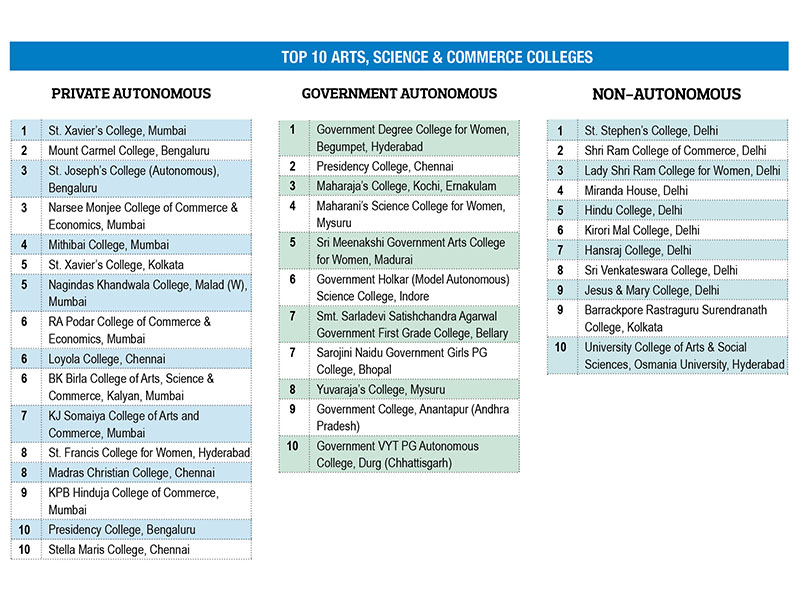

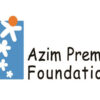
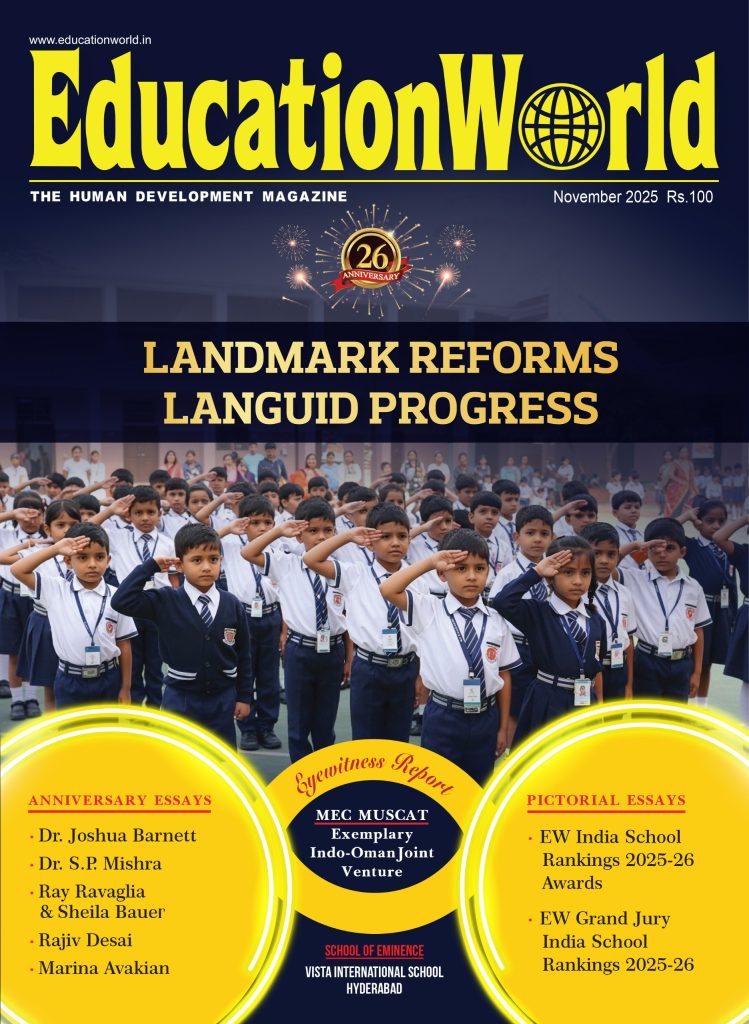
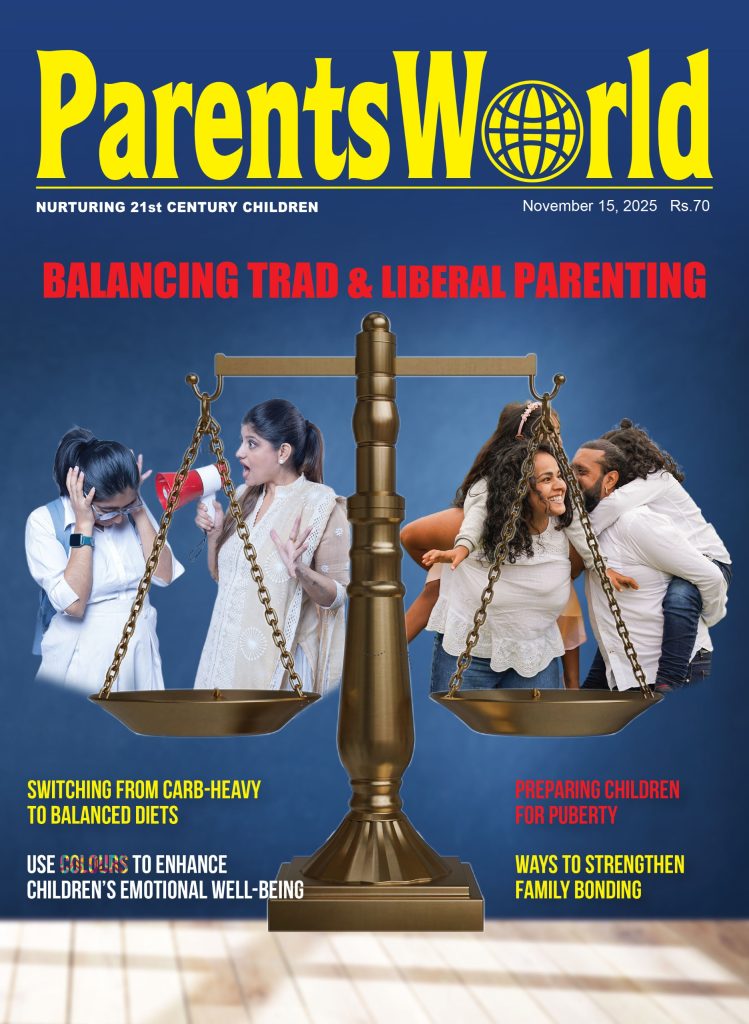



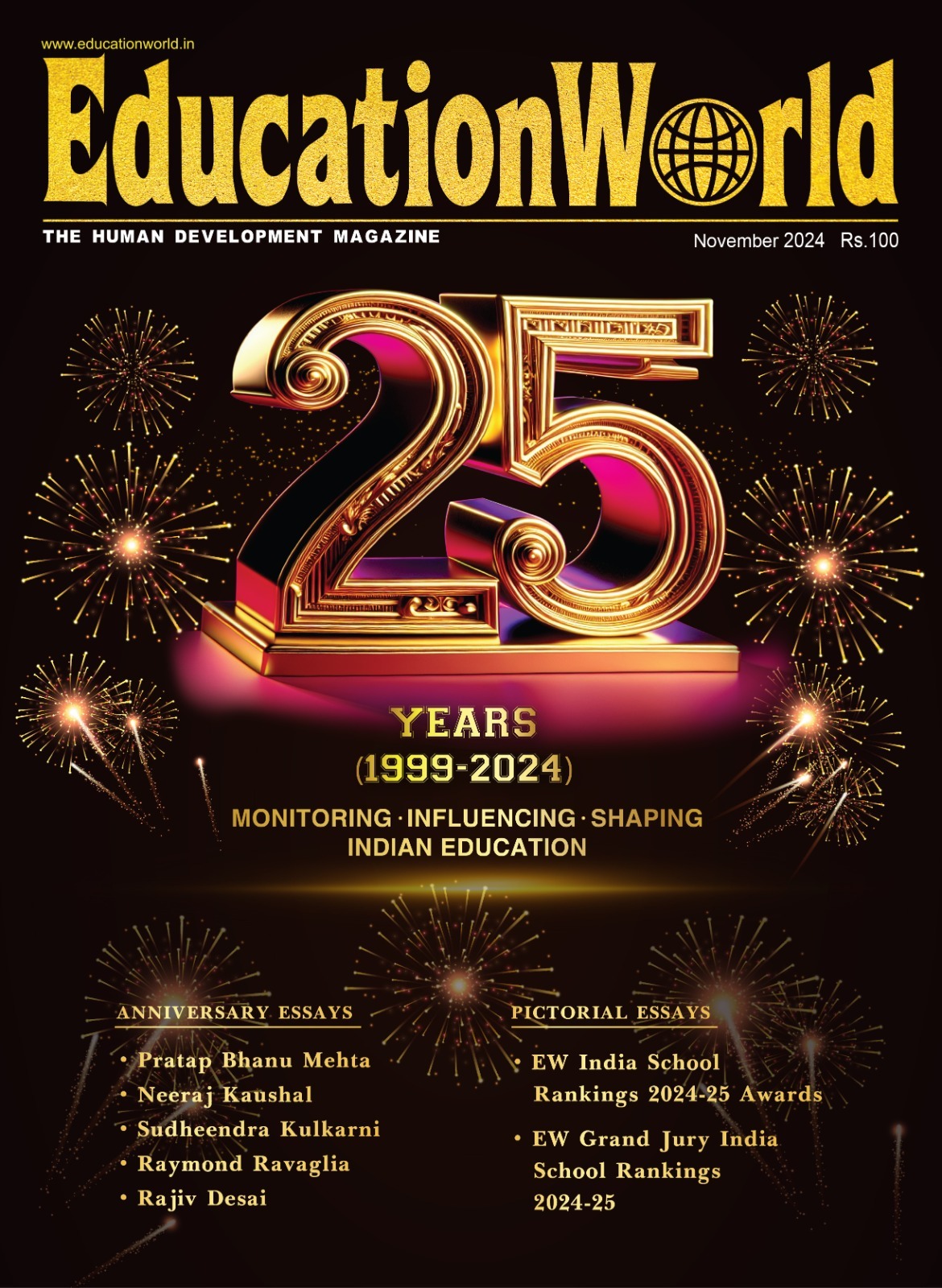



Add comment